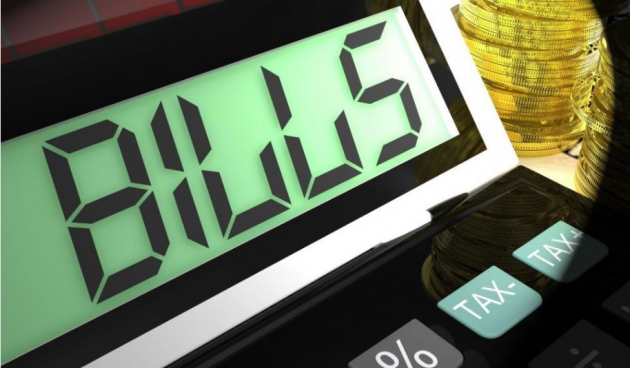The only way to maximize the performance and efficiency of your heating system is to make some essential changes to get ready for the colder months ahead. The key is to minimize heat loss and prepare your equipment for peak performance. Some people prefer a DIY approach but dealing with heating and cooling systems is highly technical work. Most of us would benefit from some professional help and advice, but there are a few changes that anyone can make. In this article, we’ll look at some ways to keep your home warmer and spend less on your winter energy bills.
The Costs of Heating and Cooling
Experts estimate that heating and cooling accounts for approximately 48% of the energy consumed in the average U.S. home. So, for most of us, this is going to be the single largest expense, and any changes we can make will have a dramatic effect. The best way to lower our energy bills without compromising on performance is to invest in some professional maintenance.
The HVAC system in your home is complex. It has electronic, mechanical, and electrical components. These all need to work in harmony to deliver heating and cooling efficiently. Ideally, your HVAC system should be serviced before each heating and cooling season. This would be in the fall and spring months before the need for extra heating and cooling becomes critical. Well maintained equipment is less likely to break down when you need it, and the useful lifespan is extended.
7 Tips to Lower Bills and Reduce Heat Loss
Let’s take a look at seven easy ways to lower your winter energy bills and reduce the loss of heat from your home.
- Adjust Your Thermostat
The thermostat is the brain of your entire heating and cooling system, and any changes made here can have a dramatic effect on your entire home. One of the best strategies for winter months is to set the thermostat back by around 7º-10ºF for 8 hours each day. This is easy if you have a programmable thermostat or you make an upgrade to a smart thermostat. If you lower the temperature when the home is empty, you can save around $83 per year on your heating costs. If you go on vacation, you can set the thermostat to 55ºF, which is sufficient to prevent your pipes from freezing. If you turn the heat down at night when everyone is in bed and back up again before they wake, you can make even greater savings.
- Calibrate the Thermostat
As we mentioned above, the thermostat is the brain for your system, and it needs to be accurate. If your thermostat is not calibrated, you could be paying for heating that you don’t need. Even a difference of 1º or 2ºF can make a difference, and this is easy to check. A thermostat can lose calibration if dirt or dust gets inside the unit and covers the sensor. Another possible cause is if the unit is jarred or bumped accidentally. Remove the thermostat cover and clean it carefully regularly to prevent a build-up of dust in the unit. Consider a professional HVAC service for your system, which includes a thermostat calibration to improve fuel efficiency.
- Install a High Efficiency Furnace
According to experts, an older furnace with 60% efficiency when compared to a modern high efficiency furnace with 98% efficiency could cost the homeowner almost $12,000 in energy bills over the lifespan of the equipment. A furnace can use various fuels, including natural gas, heating oil, or electricity, but the efficiency is always measured as an Annual Fuel Utilization Efficiency (AFUE) rating. When you’re looking for a new furnace, you want the highest AFUE rating that you can afford. A modern high efficiency furnace could have an AFUE rating as high as 98.2%! In this particular case, that would mean that only 1.8% is wasted as exhaust. A high efficiency furnace has an AFUE rating of 90% or greater, and using a unit like this could save an average home around 25-30% on annual heating bills.
- Ceiling Fans
If you have ceiling fans, you may think that they are only good to move air around during the summer months. But, if you reverse the fans and use them on a low speed setting in winter, they can help to circulate the heated air. This is a cheaper way to make a room feel warmer without turning up the thermostat. In fact, you may notice that you can cut your heating bills by around 10% with this one simple tip!
- Furnace Burners
A great deal of energy efficiency can be gained or lost at the furnace burners. If the burners are corroded or dirty due to an accumulation of soot, they will be less efficient. Rust can be caused by a condensate leak that has gone undetected due to a lack of regular maintenance. Inspecting, cleaning, and adjusting the furnace burners will make a dramatic increase in the performance and efficiency of your furnace.
- Insulation Levels
Insulation is a passive way to keep your home warmer in winter, and if you don’t have enough, it will cause your heating system to work harder. Evaluating your insulation levels in areas such as the attic, crawlspace, and walls will save you money on your heating bills.
- Sealing Ducts
Studies have revealed that around 10-30% of treated air can escape from ducts. This is air that has been cooled or heated to keep the home comfortable. Expended energy on treated air that simply escapes is a waste of money and extremely inefficient. Inspect your ducts that are accessible and check them for signs of cracks or breaks. These can be sealed with duct tape, but this is a temporary fix, and a professional repair is recommended.
If you want to winterize your home and prepare your heating system for the colder months ahead, ask your local HVAC specialist about a checkup today.

